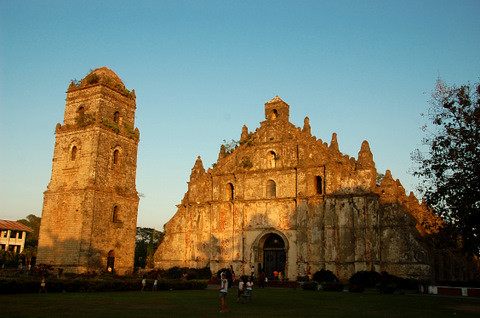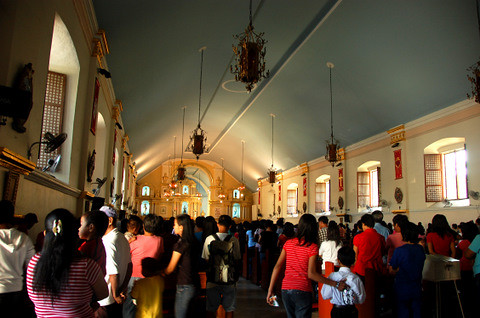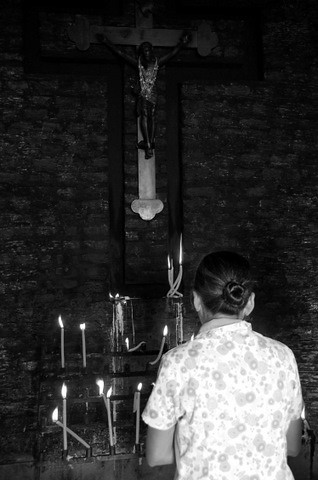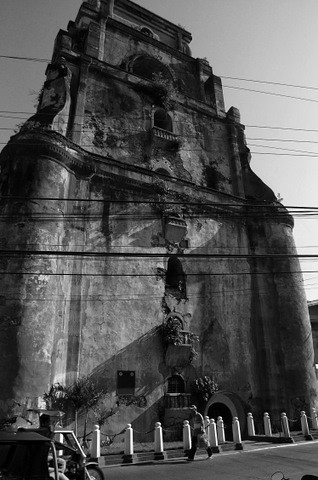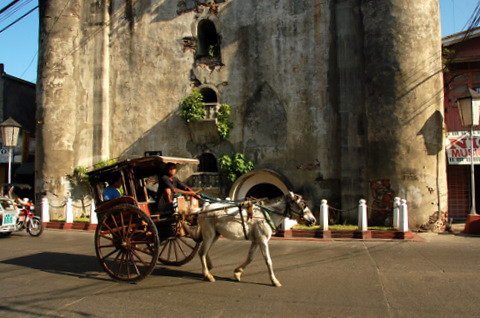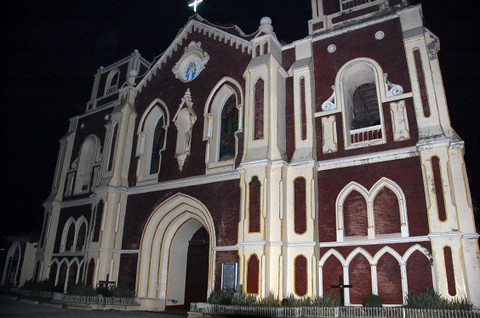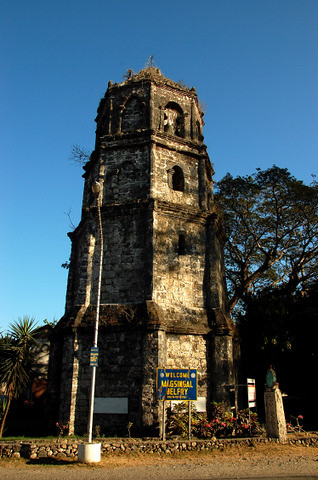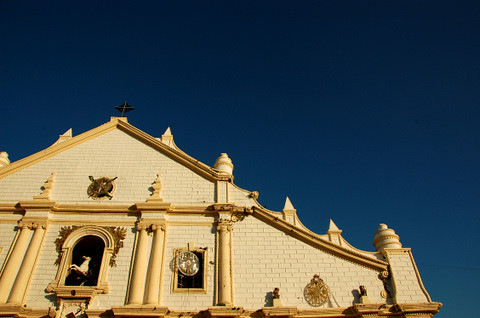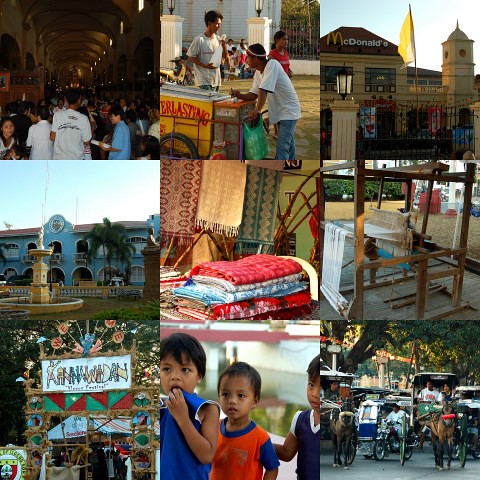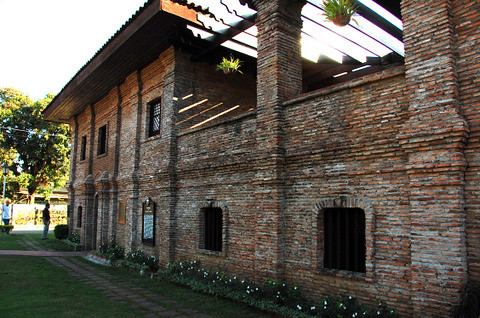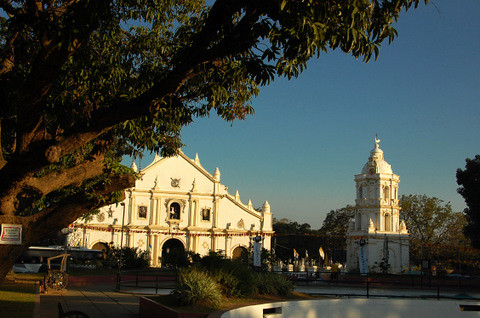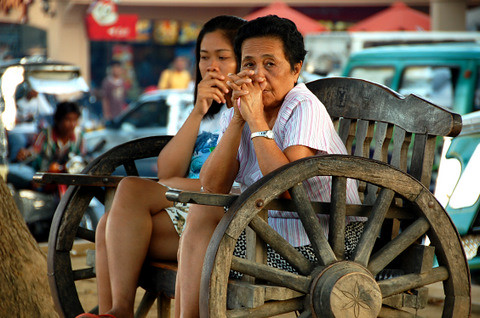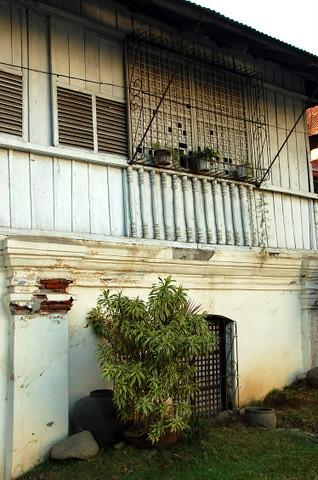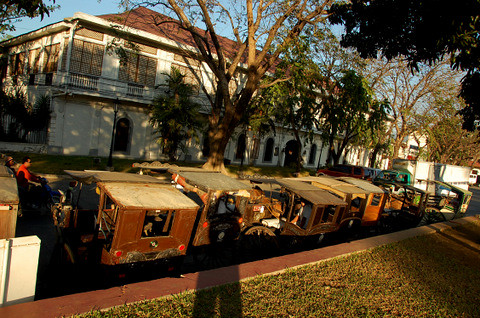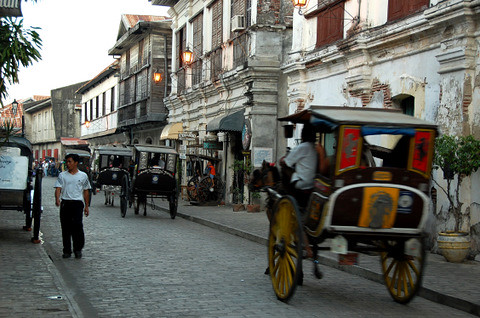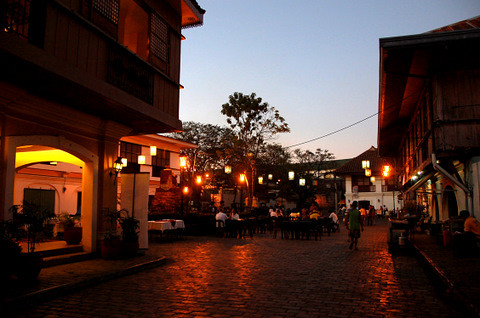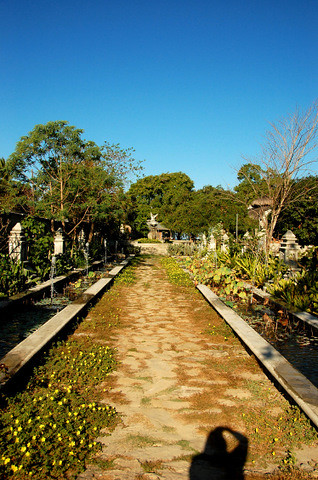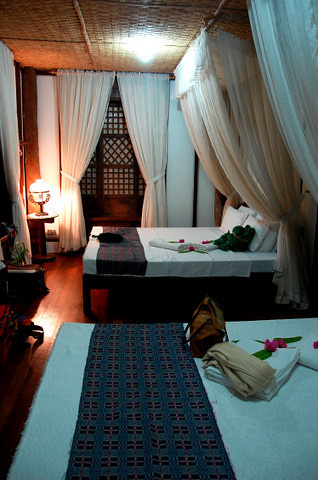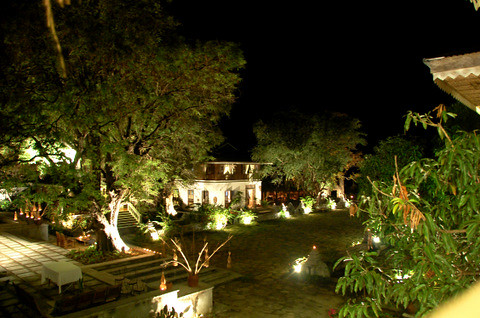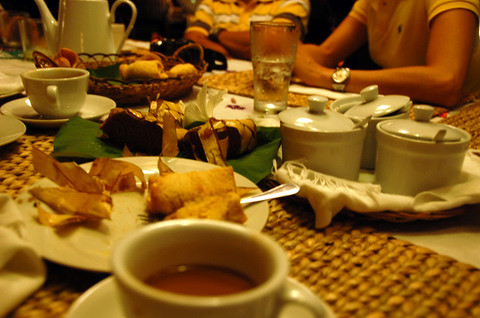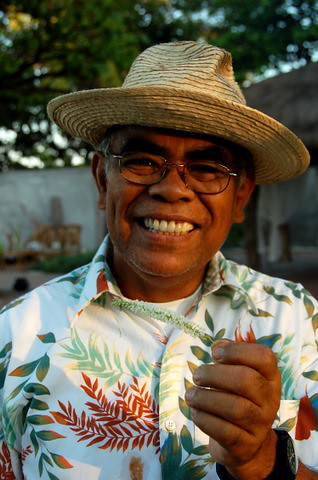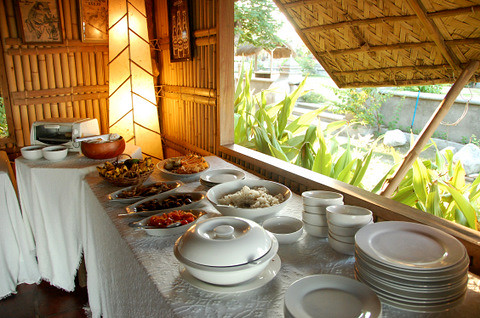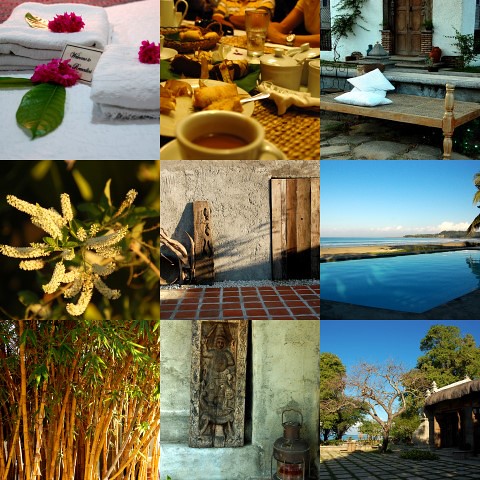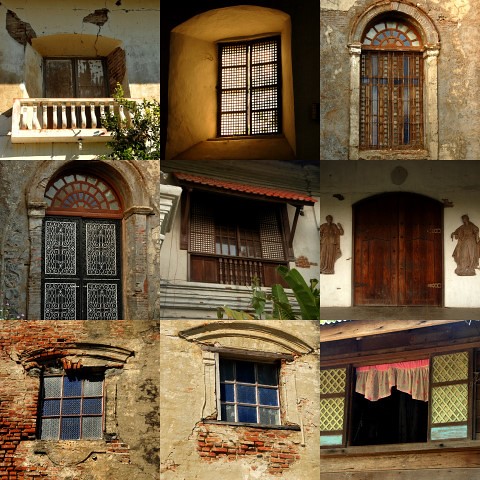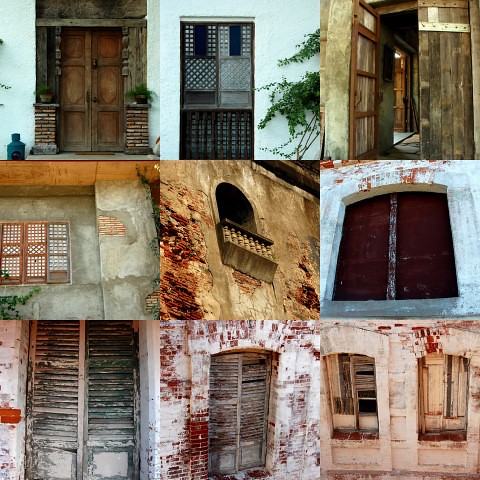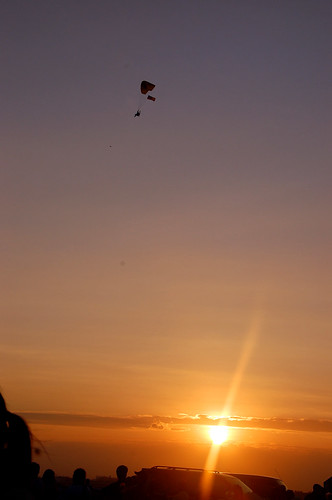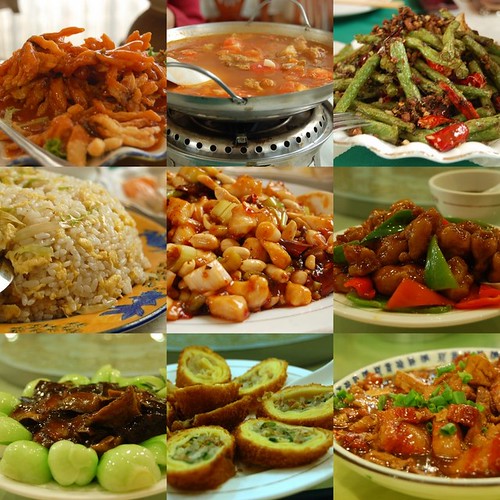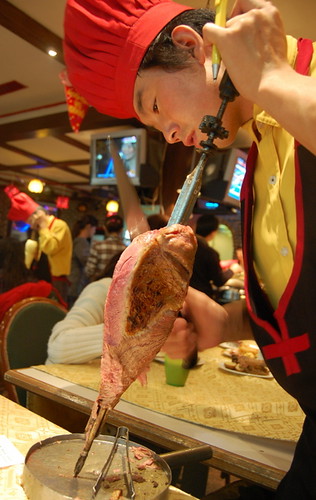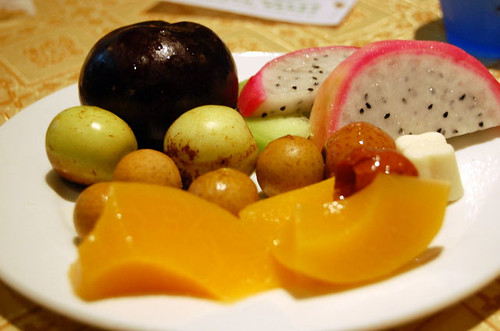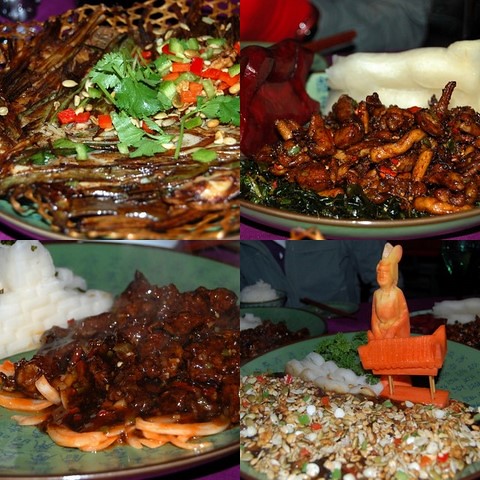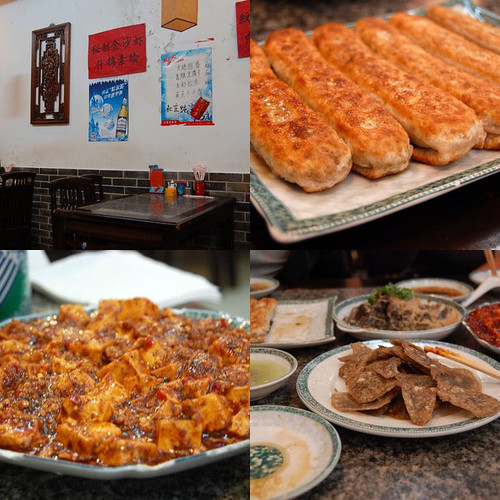St. Augustine Church, more commonly known as Paoay Church
I decided to devote an entire post to the churches in Ilocos because seeing these structures was so special to me. And trust me, when you see them in person you'll realize that they demand your undivided attention.
Like many of the old churches in the Philippines, they stood as silent witnesses to centuries of struggle and joy; and served as places of refuge and revelry. Today they are no less commanding in their presence, perhaps even more so with the patina of age. And though we didn't see all of them, we saw many, I saw enough to leave me awe-struck.
Because Ilocos fell under the sole jurisdiction of the Augustinian order, (coincidentally that of my alma mater as well) the churches were built in a somewhat similar style usually with a detached belfry. But each church is unique and magnigicent in its own right and each town had one of their own to be proud of. As we hopped in and out of our van, touring the different churches, I thought about how the Ilocos church belt would make the perfect visita iglesia route for Holy Week.
The Paoay Church is incredibly beautiful! It's even more captivating in person especially when bathed in the glow of the late afternoon sun and brought to life with townsfolk practicing for the guling-guling festival at its lap. On the narrow side street next to the church was a small market selling mostly clothes and souvenirs. All together, it was a very moving sight.
The Paoay church was built at the turn of the 18th century using coral blocks (photo below) following the earthquake baroque style mixed in with some oriental qualities. Flanking the sides of the church are huge lateral buttresses that make the church appear even more massive. The pretty side windows and the foliage peeking through the cracks add color and character to an already stunning piece of work.
coral blocks on the facade of the Paoay Church
As we admired it from a distance, a man perched on his parked motorcycle offered to take our group photo. After which he volunteered some facts about the church and how it is now included in the UNESCO World Heritage List. Once again, the pride the Ilocanos have in their heritage shone bright and clear. Beside the church is a bell tower built with the same coral stone. I tried to imagine the view the Katipuneros had up there while they used it as an observation post.
Just north of Laoag city is the town of Bacarra, the home of the pretty red-brick Bacarra Church and it's famous belfry. The original church suffered heavy damages from past earthquakes and has since been restored while the belfry remains untouched, it's bell still hanging precariously from atop it's crumbling tower. At it's foot is the pile of debris which made for a fun, albeit pretty cheesy, photo op heehee.
Bacarra church
I don't have a picture of St. William's cathedral in Laoag (actually I do, but it didn't come out good) because the sun was directly behind it, preventing me from taking a decent photograph of it where it didn't come out as just a silhouette. The facade of the church, which is of Italian renaissance design, has a recessed niche with a statue of San Guillermo (St. William), the city's patron saint. I did however manage to take a photo of the interior of St. William during a Sunday morning mass. It was standing room only with people of all ages, a common sight around our deeply faithful country.
Inside St. William's cathedral (above & below)
I regret not seeing the Bantay Church (St. Augustine church, Ilocos Sur) in daytime when we could appreciate it better.
If you're driving from Vigan to Currimao or Laoag, you can't miss it. We were rushing on our way to Vigan so we could still catch some light at Calle Crisologo so we didn't stop at the Bantay church earlier. On our way back after dinner, we made a quick stop to check it out. The darkness prevented us from seeing the Bantay belfry which stands a few meters away on a hill. Nevertheless, the church was still a sight to behold.Bantay church
Because the main reason for our trip to San Nicolas was the market, I have no pictures of the San Nicolas church facade to show you either. Sorry about that! But I hope you can appreciate this photo of the rear of the church with the pretty blue windows set off by the deep blue sky. Just ignore the ugly cables. The San Nicolas church holds the distinction of being the first church in the region, imagine that, and I don't even have a decent photo of it. tsk tsk. :)
The Magsingal Belfry was an unplanned pitstop. We saw it on the side of the road as we drove to Vigan. And being that it was the first belfry of our trip we all screamed in delight and asked Gani to stop the car. We never made it to the church as we were in a hurry, but just walked around the belfry and took some photos before we continued to Vigan.
Here again are some photos of St. Pauls Cathedral, better known as the Vigan Cathedral which I wrote about in my previous post.
Vigan Cathedral (above) and bell tower (below)
So there you have it, the churches we were fortunate to visit in Ilocos. We never made it to the Sta. Maria church, the other Ilocos church included in the UNESCO World Heritage List or the Santa Monica church in Sarrat, but as I always like to reason : you gotta save something for next time! :)
